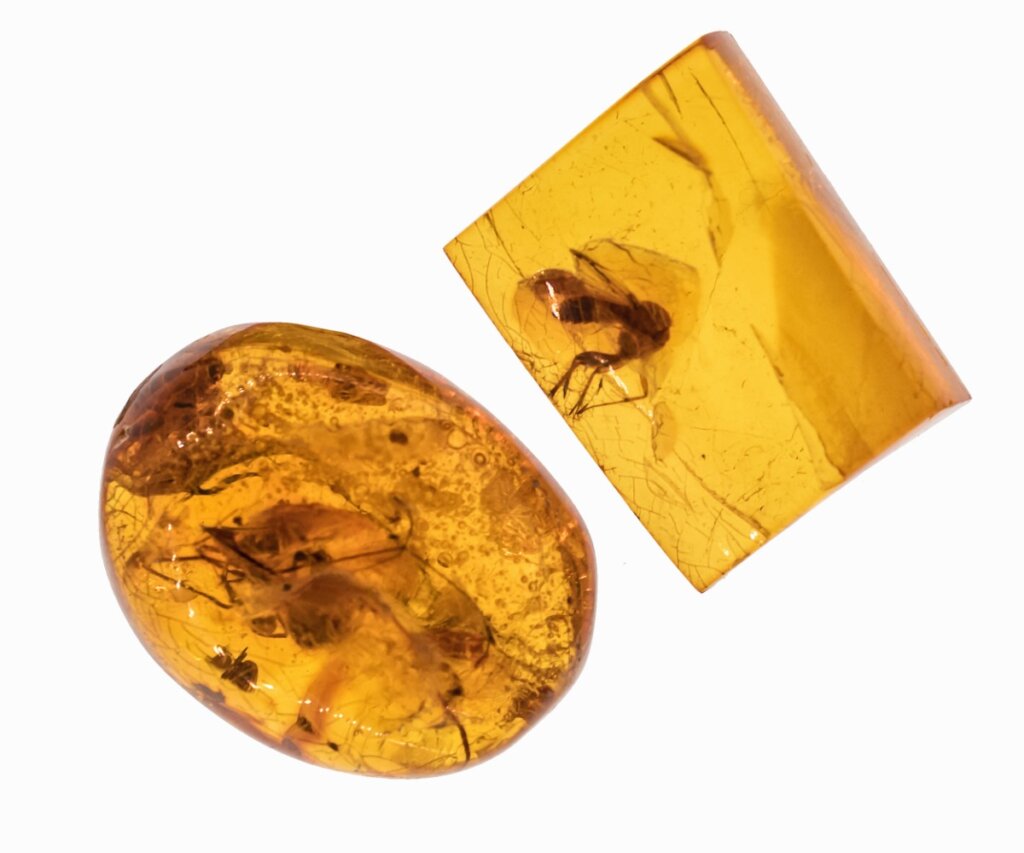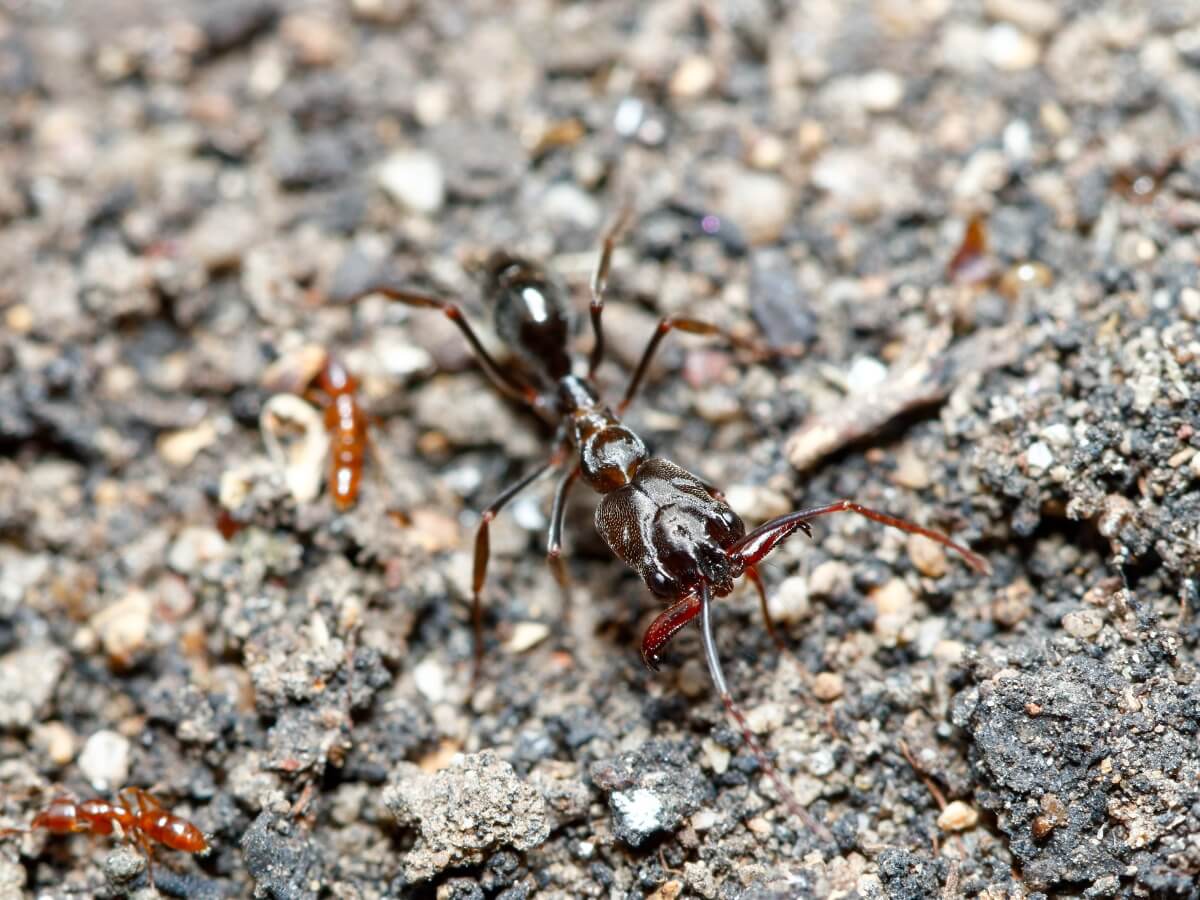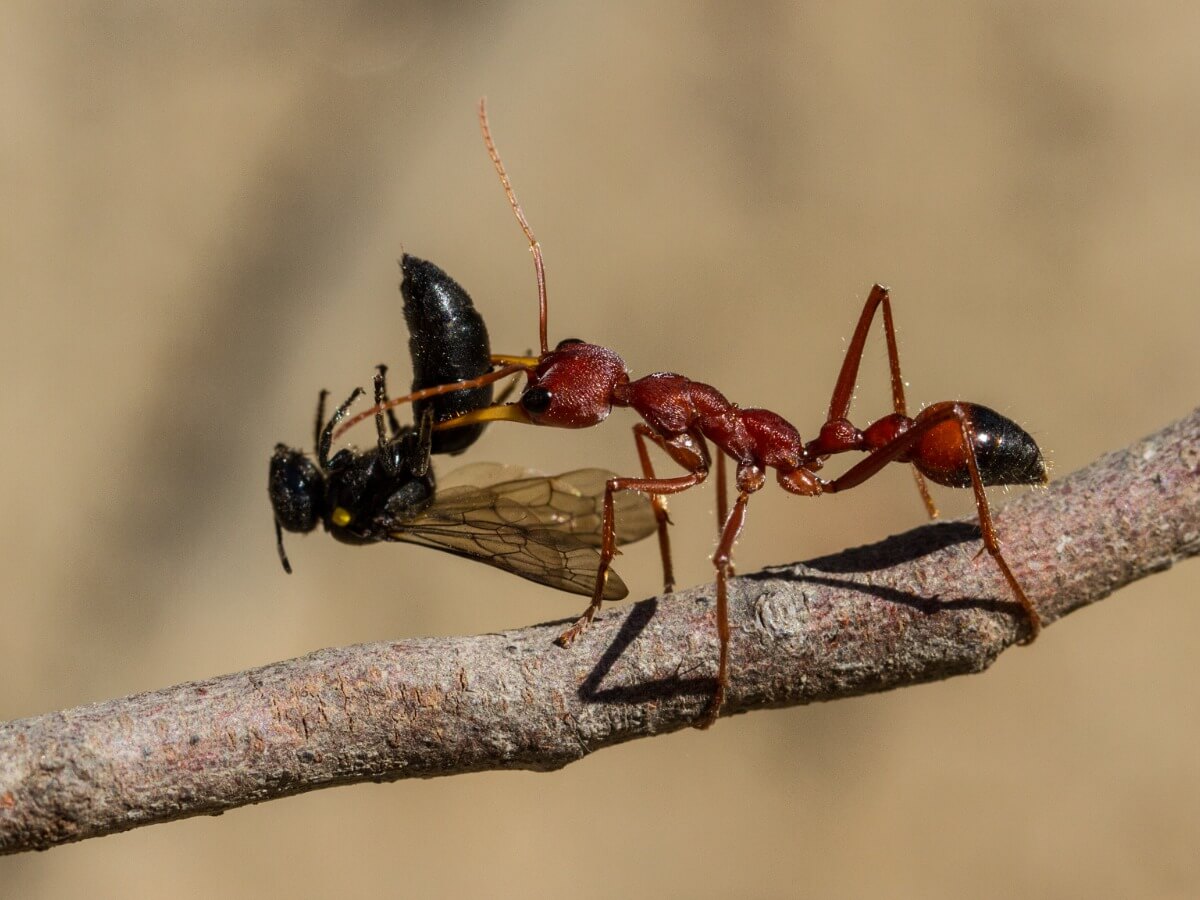Hell Ants: Extinct But Fearsome

Ants belong to a family of insects (Formicidae) that, like bees and wasps, are part of the order Hymenoptera. Of the 22,000 species that have been observed, only about 13,800 have been classified, and today species continue to be found at a dizzying rate. Hell ants, a distant relative of current lineages, are one of the most curious.
Ants have colonized every mass on Earth, with the exception of Antarctica and some remote islands. They’re an essential part of any ecosystem, they account for up to 25% of the terrestrial biomass of animal origin, control invertebrate pests, promote pollination, serve as food for predators, and much more. Meet one of their relatives today.
Discovery of the hell ants
Before launching into the characteristics of these ancestral animals, we need to unravel a few things. The term hell ant refers to the now extinct subfamily of Hymenoptera called Haidomyrmecinae. Although, in the past, this taxon was conceived as a minor group, there’s now consensus that it’s an established subfamily.
This group of ancestral ants has only been described with the discovery of three fossil records: one in France, another in Myanmar and the other in Canada. In addition, in 2020, the discovery of a fossil of a specimen hunting another Cretaceous invertebrate yielded a lot of new information about its way of life. The research, published in the journal Current Biology, has become well known.
Within this subfamily, now disappeared, 9 different genera are described, comprising a total of 13 species. These are Aquilomyrmex, Ceratomyrmex, Chonidris, Dhagnathos, Haidomyrmex, Haidomyrmodes, Haidoterminus, Linguamyrmex, and Protoceratomyrmex. Over time, several specimen fossils have been found within these groups.
Although we still have very little information about some of these groups, the discovery of new fossils is expected to shed some light on them.

Physical description and behavior
As we’ve said, the term “hell ant” includes a total of 13 species of ancestral ants, which present different adaptations to the environment and different characteristics. For this reason, we’re going to have a look at some of the most relevant genera of this subfamily, but separately. Don’t go away!
1. Ceratomyrmex
To date, this genus encompasses a single species (Ceratomyrmex ellenbergeri) that has been detected in various fossils in the Asian region, dating from the Cretaceous period. Like all representatives of the subfamily, hell ants stand out for their highly specialized mouth structures, on a very different plane from that of current species.
In order for us to understand each other, today’s carnivorous ants have jaws in a “horizontal” plane. Odontomachus monticola, Odontomachus bauri, and Anochetus ghilianii are examples of this. However, specimens of the genus Ceratomyrmex have mouthparts in a “vertical” plane, as if they were abyssal fish.
The workers that experts have discovered are between 4.5 and 5.9 millimeters long and carry a very different clipeus, which forms a kind of “horn” projected between the two antennas. The jaws are large and it’s believed that these were primarily used to hunt large prey, although they could also be used as a defense method to push off predators. Here you can see its holotype.

2. Haidomyrmex
This genus contains three different species: Haidomyrmex cerberus, Haidomyrmex scimitarus and Haidomyrmex zigrasi. All of them have been dated to the late Cretaceous and have been found in various fossils from the Asian region, as studies indicate.
The specimens of this genus have a variable size, from 3 to 8 millimeters, and they have a fairly soft exoskeleton. The structure, with its jaws shaped like a scythe, make their heads look rather lethal, and this is compounded by their very pronounced compound eyes.
The particularities of each species have been described, but queens have been found in some and not in others. Anyway, here you can see the holotype of the genus, in this case of the Haidomyrmex zigrasi species.
3. Linguamyrmex
This genus also includes 3 different species: Linguamyrmex brevicornis, Linguamyrmex rhinocerus and Linguamyrmex vladi. Again, all the fossils that have been found date from the Late Cretaceous, in the Asia region. They also have a developed clypeus and upright jaws, indicating that they hunted sizable prey — and that they did it head-on.
As in the previous genus, this type of hell ant has a pair of prominent jaws in a vertical plane and is curved inwards. It’s so long that, with its “closed” structure and cutaneous horn, they achieve an infallible holding chamber for their prey. Here is its holotype and some detail of its cephalic structures.

Why is this find so important?
Ants from hell are a unique find, as they represent the cephalic structures that the ancestors of the species that inhabit ecosystems today developed in the past. In addition to their description, the new findings have gone so far as to describe how these fascinating Hymenopterans hunted, giving us even more insight into their biology and adaptations.
The curious jaws of this subfamily could have served as a defense method and an attack tool at the same time, since the vertically curved structures provide an excellent gripping mechanism.
Let’s hope that more fossils preserved in amber will continue to be discovered, in order to delve even more into the peculiarities of these deadly and fascinating Hymenopterans.
All cited sources were thoroughly reviewed by our team to ensure their quality, reliability, currency, and validity. The bibliography of this article was considered reliable and of academic or scientific accuracy.
- Barden, P., Perrichot, V., & Wang, B. (2020). Specialized Predation Drives Aberrant Morphological Integration and Diversity in the Earliest Ants. Current Biology, 30(19), 3818-3824.
- Perrichot, V., Wang, B., & Barden, P. (2020). New remarkable hell ants (Formicidae: Haidomyrmecinae stat. nov.) from mid-Cretaceous amber of northern Myanmar. Cretaceous Research, 109, 104381.
- Cao, H., Boudinot, B. E., Wang, Z., Miao, X., Shih, C., Ren, D., & Gao, T. (2020). Two new iron maiden ants from Burmese amber (Hymenoptera: Formicidae:† Zigrasimeciini). Myrmecological News, 30.
- Boudinot, B. E., Perrichot, V., & Chaul, J. C. (2020). † Camelosphecia gen. nov., lost ant-wasp intermediates from the mid-Cretaceous (Hymenoptera, Formicoidea). ZooKeys, 1005, 21.
- Ross, A. J. (2020). Burmese (Myanmar) amber taxa, on-line supplement v. 2020.1.
